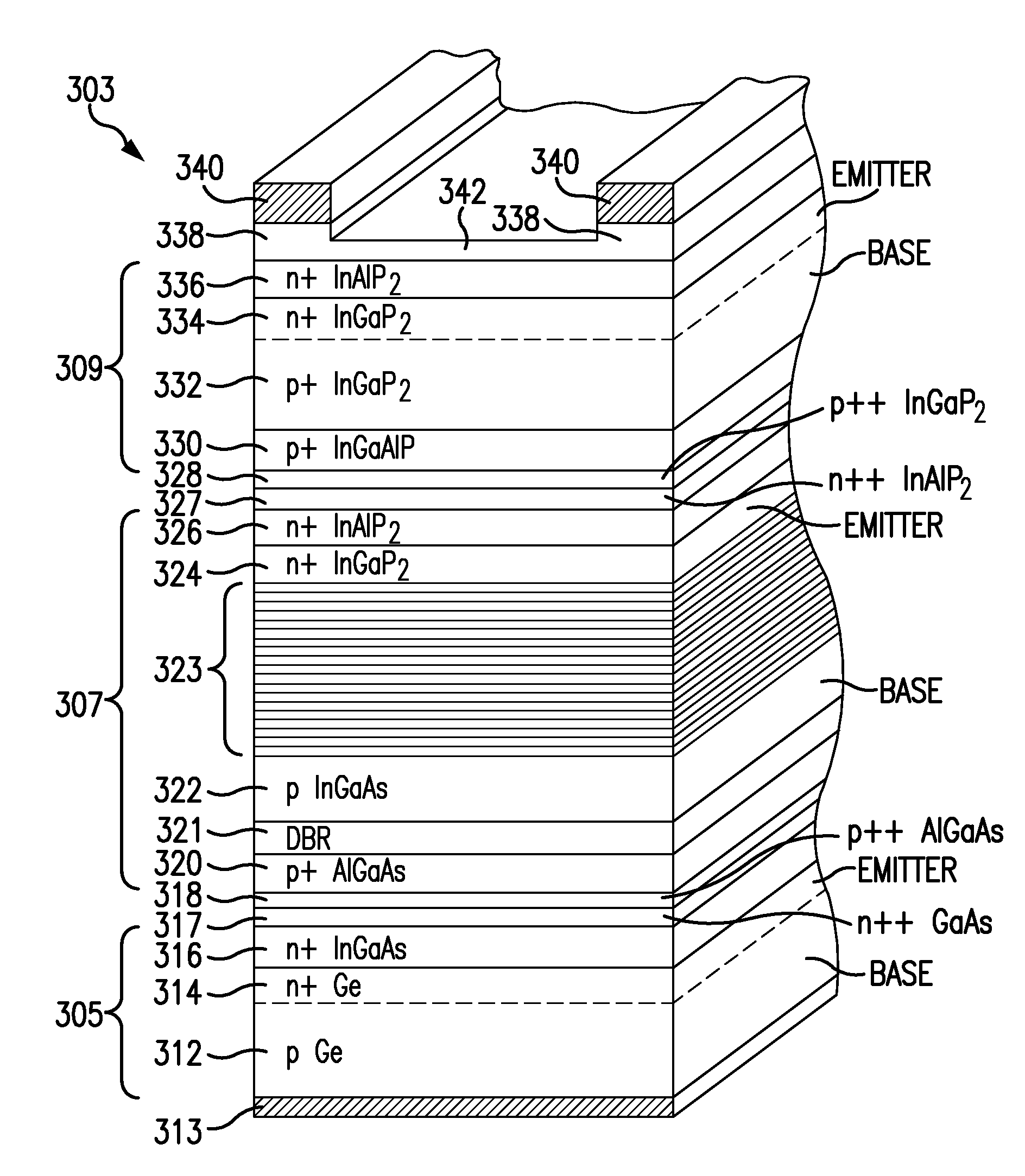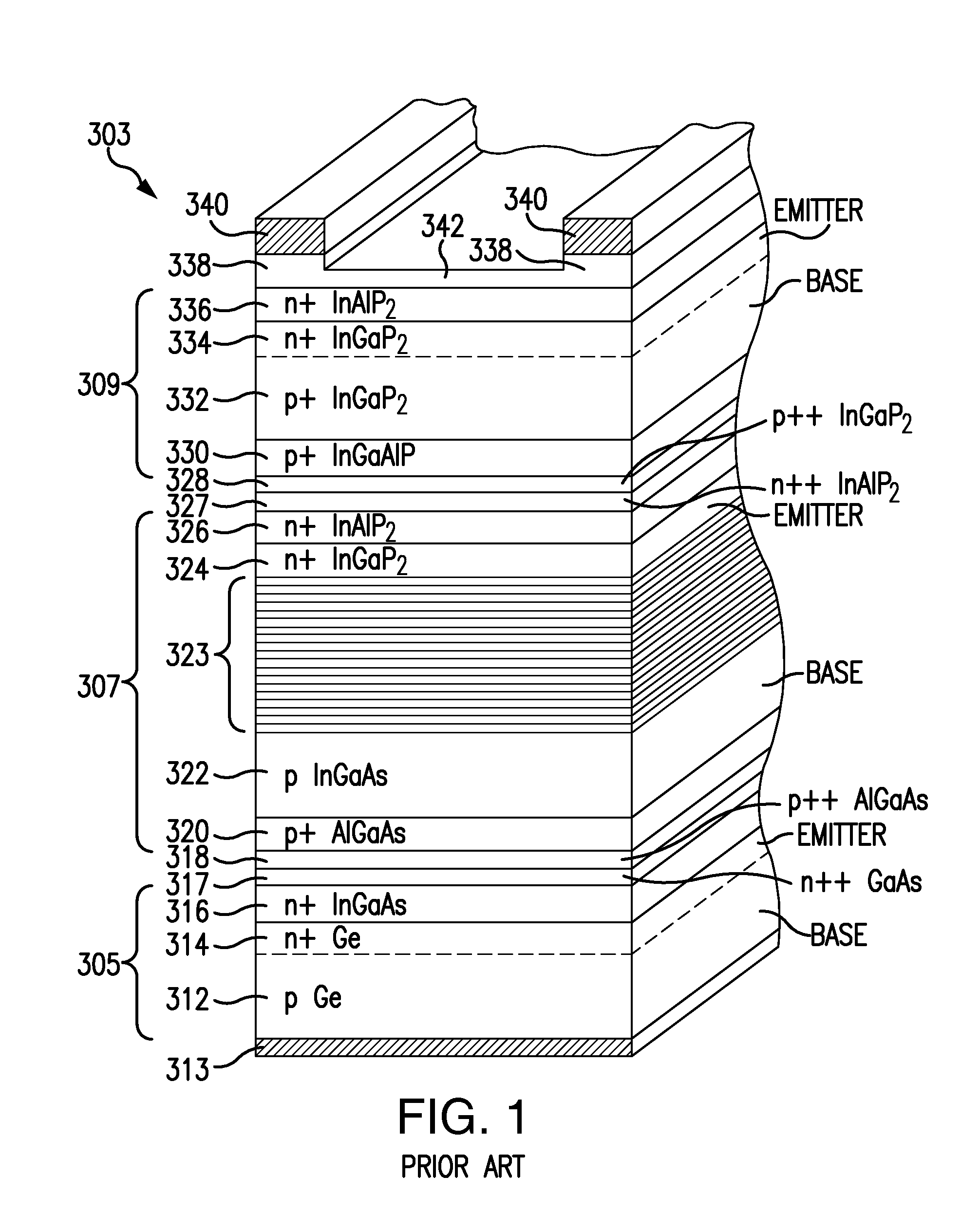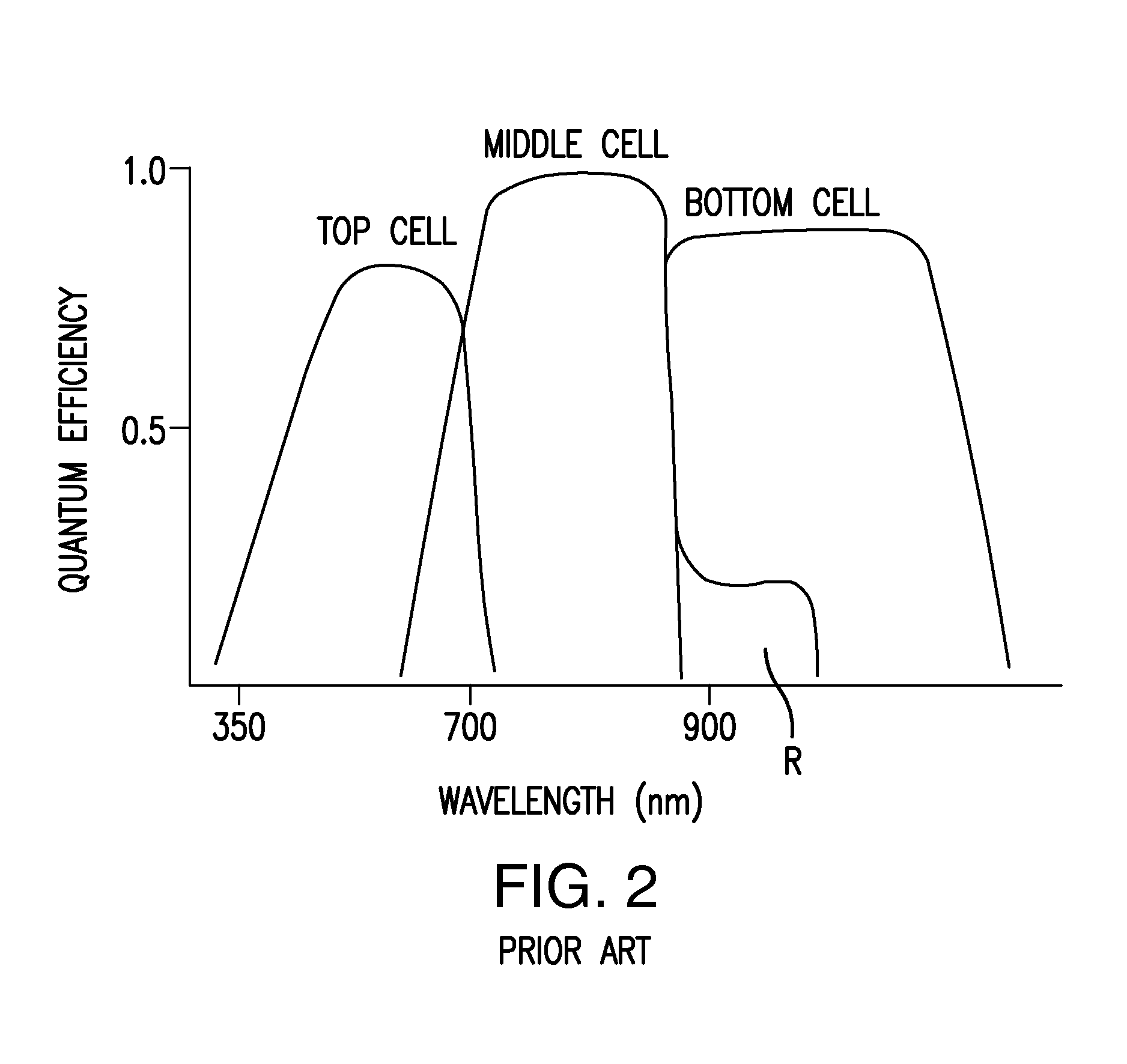Multijunction solar cell with low band gap absorbing layer in the middle cell
a solar cell and middle cell technology, applied in the field of solar cells and the fabrication of solar cells, can solve the problems of reducing the overall current flow through the circuit, affecting the efficiency of solar cells, so as to achieve the effect of increasing the photoconversion efficiency
- Summary
- Abstract
- Description
- Claims
- Application Information
AI Technical Summary
Benefits of technology
Problems solved by technology
Method used
Image
Examples
first embodiment
[0072]FIG. 3 illustrates a multijunction solar cell device 303 in which the middle subcell 307 has been modified in order to provide an increase in the overall multijunction cell efficiency. As shown in FIG. 3, the bottom subcell 305 includes a substrate 312 and other layers 314, 316, 316, 317 and 318 which are identical to those described in FIG. 1, and therefore the description of such layers will not be repeated here.
[0073]In the illustrated example of FIG. 3, the middle subcell 307 includes a highly doped p-type aluminum gallium arsenide (“AlGaAs”) back surface field (“BSF”) layer 320. On top of the back surface field (“BSF”) layer 320 is a distributed Bragg reflector layer 321. In this first embodiment of the present disclosure, a distributed Bragg reflector (“DBR”) layer 321 is formed in the base layer of the middle subcell, and is constituted by alternating layers of semiconductor materials with different refractive indices but closely lattice matched to the substrate, such a...
second embodiment
[0078]FIG. 4 is a multijunction solar cell according to the present disclosure. As shown in FIG. 5, the bottom subcell 305 includes a substrate 312 and other layers 314, 316, 317 and 318 which are identical to those described in FIG. 1, and therefore the description of such layers will not be repeated here.
[0079]In the illustrated example of FIG. 4, the middle subcell 307 includes a highly doped p-type aluminum gallium arsenide (“AlGaAs”) back surface field (“BSF”) layer 320. Below the back surface field (“BSF”) layer 320 is a distributed Bragg reflector layer 321, which is formed directly over the tunnel diode 317 / 318. In this second embodiment of the present disclosure, a distributed Bragg reflector (“DBR”) layer 321 is substantially identical to that described in connection with FIG. 3, and thus the description of the DBR layers will not be repeated here.
[0080]In the illustrated example of FIG. 5, a highly doped p-type aluminum gallium arsenide (“AlGaAs”) back surface field (“BSF...
third embodiment
[0082]FIG. 5 is a multijunction solar cell according to the present disclosure. As shown in FIG. 5, the bottom subcell 305 includes a substrate 312 and other layers 314 and 316 which are identical to those described in FIG. 1, and therefore the description of such layers will not be repeated here.
[0083]In the embodiment of FIG. 5, a distributed Bragg reflector (“DBR”) layer 319 is deposited directly on top of the nucleation layer 316. The DBR layer 319 is substantially identical to that described in connection with FIG. 4, and thus the description of the DBR layers will not be repeated here.
[0084]Heavily doped p-type aluminum gallium arsenide (“AlGaAs”) and heavily doped n-type gallium arsenide (“GaAs”) tunneling junction layers 318, 317 may be deposited over the DBR layer 319 to provide a low resistance pathway between the bottom and middle subcells.
[0085]In the illustrated example of FIG. 5, the middle subcell 307 includes a highly doped p-type aluminum gallium arsenide (“AlGaAs”)...
PUM
 Login to View More
Login to View More Abstract
Description
Claims
Application Information
 Login to View More
Login to View More - R&D
- Intellectual Property
- Life Sciences
- Materials
- Tech Scout
- Unparalleled Data Quality
- Higher Quality Content
- 60% Fewer Hallucinations
Browse by: Latest US Patents, China's latest patents, Technical Efficacy Thesaurus, Application Domain, Technology Topic, Popular Technical Reports.
© 2025 PatSnap. All rights reserved.Legal|Privacy policy|Modern Slavery Act Transparency Statement|Sitemap|About US| Contact US: help@patsnap.com



